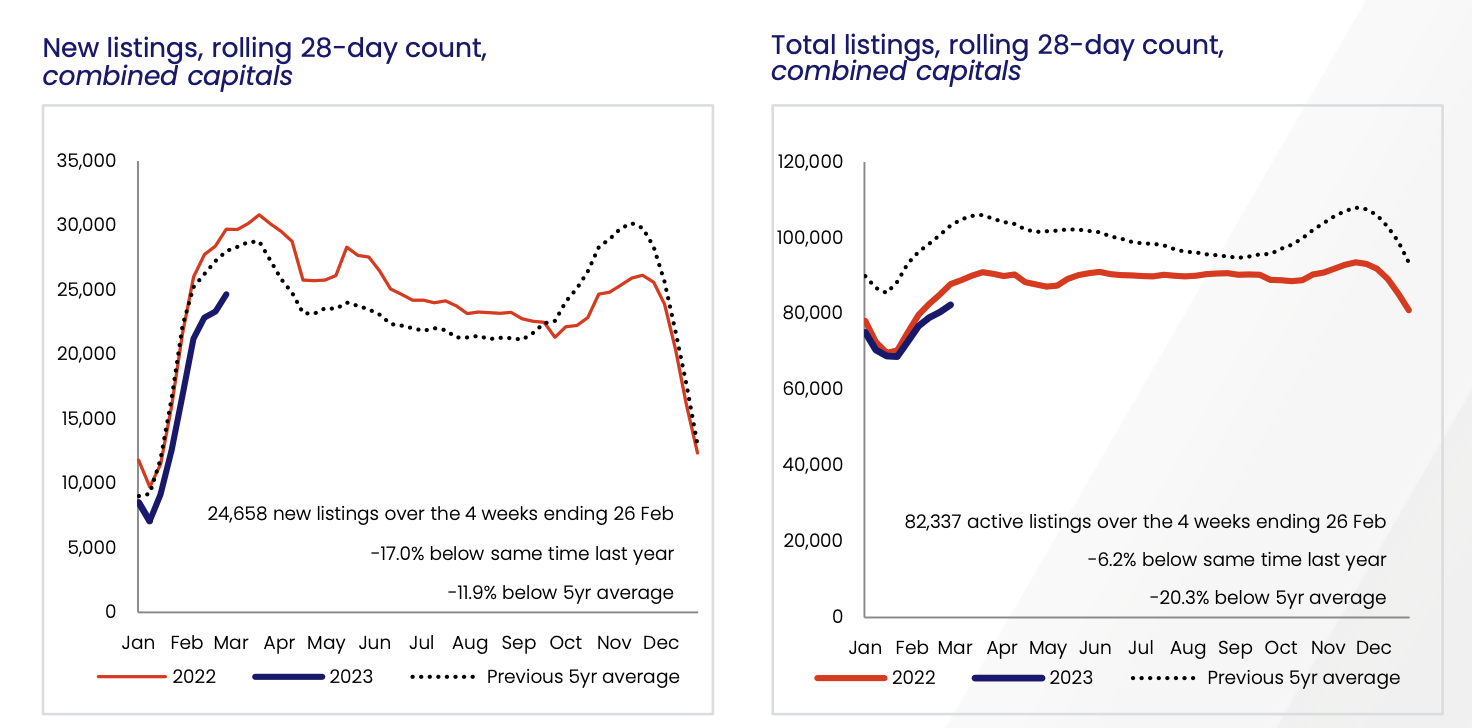Here’s a puzzle for you.
Ever since the Reserve Bank of Australia started lifting the cash rate in May 2022, Australian property prices have been falling as higher interest rates reduce buyer demand.
So why did CoreLogic’s national home value index fall by a minimal 0.14% in February from January, given that interest rates are still on the rise?
And why did Sydney home values actually rise for the first month since January 2022 (by 0.30%)?

Well, as the graph above shows, new listing volumes plunged 17.0% in February when compared to the previous year, leaving them 11.9% below the previous five-year average.
But while new listing volumes have declined as prospective sellers wait on the sidelines, property sales have increased, with a 39.4% monthly lift in sales nationally over February.
As a result, supply isn’t meeting demand, putting a floor on any price declines.
Only time will tell if we’ve hit the bottom of the downturn yet or if there is still some way to go.
That said, it’s worth highlighting that – due to the strength of the 2020-22 boom – prices in the combined regional markets and the combined capitals remain 30.7% and 10.4% higher respectively than their March 2020 levels, despite the impact of ten interest rate rises.
An end in sight for interest rate rises?
In more good news, Reserve Bank governor Philip Lowe gave a speech at the Australian Financial Review Business Summit in which he hinted that a pause in interest rate hikes was imminent.
“At our board meeting yesterday, we discussed the lags in monetary policy, the effects of the large cumulative increase in interest rates since May and the difficulties that higher interest rates are causing for many households,” he said.
“We also discussed that, with monetary policy now in restrictive territory, we are closer to the point where it will be appropriate to pause interest rate increases to allow more time to assess the state of the economy.”

